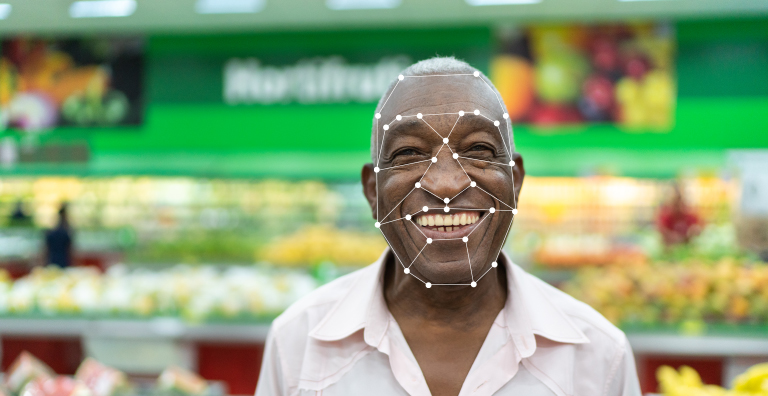Here Is What the Future of Retail Looks Like With Facial Biometrics
In recent years, self-service checkout kiosks have proliferated across retail stores, offering customers a new level of convenience while helping businesses to streamline their operations. That being said, this technology isn’t without its faults. Conventional self-checkouts can’t recognize regular customers and apply loyalty points, for example, and complications with processing payments are commonplace. Sales of age-restricted goods are also an issue, as conventional systems don’t have a means of confirming that a customer is old enough to buy a bottle of wine, for instance.
Thankfully, new technologies are emerging that can address these shortcomings — with facial recognition offering the most compelling solution. In the very near future, this technology is poised to radically transform the shopping experience to the benefit of not just the customer, but also the retail staff and the business itself.
How Facial Recognition Is Reinventing the Retail Experience
In practice, this transformation will probably start at the customer’s home. Using a mobile app, the customer will enroll in a store’s program by taking a selfie and submitting a picture of a government-issued ID. Facial recognition technology will match the two, thereby confirming the customer’s true identity. From there, the customer can add payment information to be associated with their face and account.
At the store, the customer will grab whatever items are needed and go to self-checkout. The checkout terminal will automatically recognize the customer’s face and link the transaction to their account. Once the items are scanned, the customer can simply scan their face to confirm payment — no need to present a debit or credit card, cash or any other payment form, as the needed information would have already been submitted during the one-time enrollment process.
What’s more, this whole procedure remains unchanged even if the customer is buying an age-restricted product. A bottle of Chablis can be scanned and tossed into a shopping bag just like any other item, since the customer’s age would have already been confirmed during the enrollment process. With facial recognition, age verification can be done seamlessly — no more staff intervention or awkward scenarios of asking for IDs.
As facial recognition becomes more mainstream and a growing number of customers recognize its benefits, in-store biometrics will continue to evolve. A kiosk can welcome enrolled customers as soon as they enter a store, offering personalized greetings and drawing their attention to special offers that are customized to their particular interests.
The use cases for facial recognition are limitless. Watch this video to see how retailers are using facial recognition to transform their business and stay competitive.
Happier Customers and a Better Bottom Line
Essentially, retailers will benefit from happier customers and streamlined operations, with the automation of biometrics freeing up resources that can be better applied elsewhere. At the same time, retailers who’ve deployed best-in-class facial recognition solutions with privacy protections built in will remain untroubled by evolving regulations, confident that their solutions are compliant and offering customers the highest level of protection with respect to their sensitive data.
This all points toward a future of happier customers and a better bottom line. To learn more about how your business can start on that path forward, read HID Global’s new eBook, The Ultimate Retail Experience Starts With Facial Recognition.
